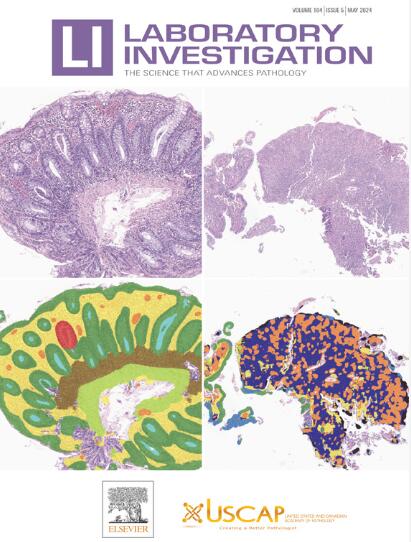Development of a Technique for Diagnosis and Screening of Superficial Bladder Cancer by Cell-Pellet DNA From Urine Sample
IF 4.2
2区 医学
Q1 MEDICINE, RESEARCH & EXPERIMENTAL
引用次数: 0
Abstract
Bladder cancer (BCa) is the most common malignancy of the urinary system with high incidence and recurrence rates. There are several ways to detect BCa. However, different approaches have different accuracy, which essentially depends on the sensitivity and specificity of the technique. Alternative noninvasive diagnostic tools for BCa are needed. We isolated and compared urinary cell-pellet DNA (cpDNA), cell-free DNA, and exosomal DNA from patients with localized BCa. Consequently, we analyzed 12 tissues and cpDNA samples by next-generation sequencing and then used bioinformatic tools to analyze genomic and transcriptomic alterations in coding and noncoding sequences. Then, cpDNA and tissue DNA from 12 patients were analyzed using next-generation sequencing to verify that the genomic characteristics of cpDNA are concordant with those of tissue. We also detected somatic mutation patterns between tissues and their corresponding cpDNA samples. An overlapping variant analysis was performed based on somatic mutation data and a high similarity was observed. Moreover, we identified frequently mutated signaling pathways. In these results, several point mutations were analyzed in FGFR3, TTN, and LEPROTL1 from the cpDNA of patients with BCa. Tumor mutational burden analysis showed that cpDNA had no significant difference in tumor mutational burden compared with tumor tissue. These results provide that cpDNA is a potential diagnostic source for detecting and managing BCa using alternative noninvasive methods from patient urine. Our findings may serve as a clinical tool for early detection or recurrence screening of nonmuscle invasive BCa using urinary cpDNA.
尿液细胞颗粒DNA诊断筛选浅表性膀胱癌技术的建立。
膀胱癌(BCa)是泌尿系统最常见的恶性肿瘤,具有高发病率和复发率。有几种检测BCa的方法。然而,不同的方法有不同的准确性,这本质上取决于技术的敏感性和特异性。需要替代的非侵入性BCa诊断工具。我们分离并比较了局部BCa患者的尿细胞颗粒DNA (cpDNA)、游离DNA和外泌体DNA。因此,我们通过下一代测序分析了12个组织和cpDNA样本,然后使用生物信息学工具分析了编码序列和非编码序列的基因组和转录组变化。然后,利用新一代测序技术对12例患者的cpDNA和组织DNA进行分析,验证cpDNA的基因组特征与组织基因组特征一致。我们还检测了组织及其相应的cpDNA样本之间的体细胞突变模式。基于体细胞突变数据进行重叠变异分析,发现相似性较高。此外,我们还发现了频繁突变的信号通路。在这些结果中,分析了BCa患者cpDNA中FGFR3、TTN和LEPROTL1的几个点突变。肿瘤突变负荷(Tumor mutational burden, TMB)分析显示cpDNA与肿瘤组织的TMB差异无统计学意义。这些结果表明,cpDNA是一种潜在的诊断来源,可以通过非侵入性方法从患者尿液中检测和治疗膀胱癌。我们的研究结果可以作为临床工具,用于早期检测或复发筛选非肌源性BCa的尿cpDNA。
本文章由计算机程序翻译,如有差异,请以英文原文为准。
求助全文
约1分钟内获得全文
求助全文
来源期刊

Laboratory Investigation
医学-病理学
CiteScore
8.30
自引率
0.00%
发文量
125
审稿时长
2 months
期刊介绍:
Laboratory Investigation is an international journal owned by the United States and Canadian Academy of Pathology. Laboratory Investigation offers prompt publication of high-quality original research in all biomedical disciplines relating to the understanding of human disease and the application of new methods to the diagnosis of disease. Both human and experimental studies are welcome.
 求助内容:
求助内容: 应助结果提醒方式:
应助结果提醒方式:


